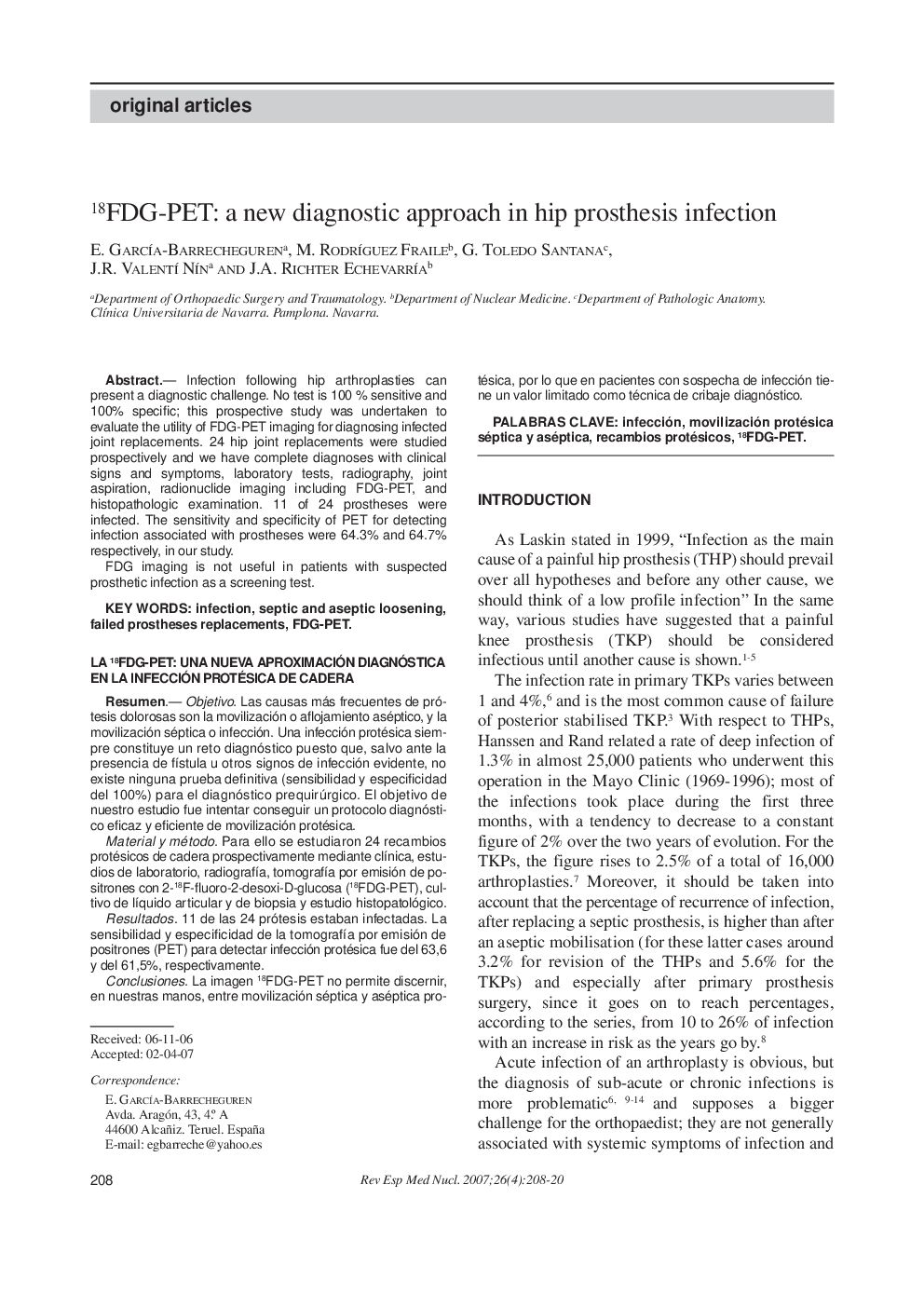| کد مقاله | کد نشریه | سال انتشار | مقاله انگلیسی | نسخه تمام متن |
|---|---|---|---|---|
| 4249641 | 1283863 | 2007 | 13 صفحه PDF | دانلود رایگان |

Infection following hip arthroplasties can present a diagnostic challenge. No test is 100% sensitive and 100% specific; this prospective study was undertaken to evaluate the utility of FDG-PET imaging for diagnosing infected joint replacements. 24 hip joint replacements were studied prospectively and we have complete diagnoses with clinical signs and symptoms, laboratory tests, radiography, joint aspiration, radionuclide imaging including FDG-PET, and histopathologic examination. 11 of 24 prostheses were infected. The sensitivity and specificity of PET for detecting infection associated with prostheses were 64.3% and 64.7% respectively, in our study.FDG imaging is not useful in patients with suspected prosthetic infection as a screening test.
ResumenObjetivoLas causas más frecuentes de prótesis dolorosas son la movilización o aflojamiento aséptico, y la movilización séptica o infección. Una infección protésica siempre constituye un reto diagnóstico puesto que, salvo ante la presencia de fístula u otros signos de infección evidente, no existe ninguna prueba definitiva (sensibilidad y especificidad del 100%) para el diagnóstico prequirúrgico. El objetivo de nuestro estudio fue intentar conseguir un protocolo diagnóstico eficaz y eficiente de movilización protésica.Material y métodoPara ello se estudiaron 24 recambios protésicos de cadera prospectivamente mediante clínica, estudios de laboratorio, radiografía, tomografía por emisión de positrones con 2-18F-fluoro-2-desoxi-D-glucosa (18FDG-PET), cultivo de líquido articular y de biopsia y estudio histopatológico.Resultados11 de las 24 prótesis estaban infectadas. La sensibilidad y especificidad de la tomografía por emisión de positrones (PET) para detectar infección protésica fue del 63,6 y del 61,5%, respectivamente.ConclusionesLa imagen 18FDG-PET no permite discernir, en nuestras manos, entre movilización séptica y aséptica protésica, por lo que en pacientes con sospecha de infección tiene un valor limitado como técnica de cribaje diagnóstico.
Journal: Revista Española de Medicina Nuclear (English Edition) - Volume 26, Issue 4, July–August 2007, Pages 208-220